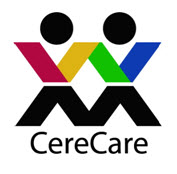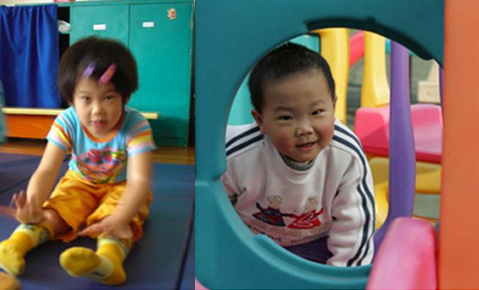

frequently
asked
questions
Frequently Asked Questions
What is Cerebral Palsy?
Cerebral = “of the brain”
Palsy = “lack of muscle control”
Cerebral Palsy (CP) is a term used to describe a group of disorders affecting body movement and muscle coordination. The medical definition of CP is “a non-progressive but not unchanging disorder of movement and/or posture, due to an insult to or anomaly of the developing brain.”
Development of the brain starts in early pregnancy and continues until about age three. Damage to the brain during this time may result in CP. This damage interferes with messages from the brain to the body, and from the body to the brain.
Does Cerebral Palsy affect all persons in the same way?
The effects of CP vary widely from individual to individual. At its mildest, CP may result in a slight awkwardness of movement or hand control. At its most severe, CP may result in virtually no muscle control, profoundly affecting movement and speech.
What is Myth vs. Fact?
Cerebral Palsy is:
- NOT contagious
- NOT hereditary
- NOT life-threatening
- NOT automatic mental retardation
Person with CP does not necessary mean that he/she is mentally retarded. People with CP enjoy satisfying careers, university education, social life and become parents.
What are the Global Statistics?
It is difficult to estimate exactly how many people have CP. Many people with mild CP are never diagnosed, while others may have multiple disabilities which overshadow their CP.
It is estimated that one out of every 500 babies, and up to one in three premature babies are affected to some extent.
What are the traditional treatments of CP?
CP is not considered to be a curable condition. Much, however, can be done to lessen the effect of CP and to help people with CP to lead independent lives. Treatment is guided by the symptoms exhibited and may include physical therapy, occupational therapy, speech therapy, casts, splints, braces, appropriate glasses and hearing aids, medications, special education and in severe cases, orthopedic and soft-tissue surgery and/or institutionalization.
How does CereCare rehabilitate CP Children?
We believe that each child should have an individualized treatment plan which assesses the child’s performance, sets goals and specifies which supports are required. The key elements to minimizing the handicapping effects of CP are the following:
- Proper management and treatment
- An environment which give the children with CP a good sense of self- esteem.
- To have educational opportunities and to have access to recreational facilities and opportunities to develop friendships
Can people afflicted live CP live an independent life?
It is the firm belief of CereCare that with proper management, persons with CP can go on to lead meaningful lives. The most famous example is the Irish author Christy Brown, whose struggles and triumphs growing up with CP have been made into the Oscar-winning movie My Left Foot.
What are Therapies and Treatments at CereCare?
Acupressure
Developed by our founder, Lu Shun Ling who while being treated by seven acupressure masters became their pupil. She consolidated everything she learned from them and come up with an acupressure treatment for CP children with remarkable results.
Conductive Education
Conductive Education is developed from the work of Austrian-Hungarian physician Dr. András Petö. From the late forties till his death in 1967 Petõ worked in Budapest with adults and children with motor disorders. It was brought to Hong Kong and perfected in the early 80s.
What is Conductive Education?
Conductive Education is neither therapy treatment nor cure. Conductive Education acknowledges that society may erect terrible barriers to children with disabilities, for which social action is required.
Conductive Education asserts that there is much more to living and development than just the medical and the social. There is the psychological too and, as in every sphere of human life, this is best addressed by education in its widest sense. Further, as in all excellent education, the goal of Conductive Education is to create autonomous learners who can go on to learn, adapt and develop under their own direction, because that is how they have learned to be.
Conductive Education's goal is learning how to learn, learning to find one's own ways to achieve personally formulated goals, experiencing greater independence and exercising choice.
In Conductive Education learners are regarded as individuals who need and ought to learn for themselves. Moreover, each individual has to be taught as a totality, a human being, rather than an assembly of 'needs' or deficits.
Movements and skills cannot be taught on their own, only within complex co-ordinations which have meaning, intention and purpose and are social in their origin. Intention and purpose require the will to try and emotional commitment to learn. Creating social and personal situations that lead learners to find their own emotional commitment to learn, 'conduction', is the central and defining feature of conductive education, it refers to teaching, teaching moreover with a particular style, in which learners are led (i.e. conducted) to become active learners.
How you can help?
Our mission is to find people who are actively supportive of assisting the less privileged on the road to self-empowerment via the vehicle of private funding.
To sponsor a child, please contact: Louise Ung at (310) 818-1029 or via email: cp@cerecare.org.
CereCare Inc. also periodically conducts fundraising events, such as benefits. Please visit our Events page and support CereCare, Inc. by participating and encourage your friends to do so as well.
| You can also donate now using your credit card, debit card or PayPal account. |